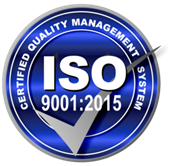
Electrical Connectors: A Review of Components, Finishes and Applications
Electrical connectors are the unsung heroes of many of the world’s leading high technology products. Connectors facilitate the flow of data and electricity between two or more different components or nodes. Without different components communicating with each other and transferring energy, daily commodities like the internet, computers, air travel, many surgical procedures, electric vehicles, and more, would cease to exist.
What Is A Connector?
A connector is a device used to join electrical circuits together, ensuring reliable signal or power transmission. It has three main components: contact springs, which maintain the separable interface and provide the transmission path; contact finishes, which protect against corrosion and maintain low resistance; and the connector housing, which offers stability, insulation, and protection for the contacts. These elements work together to create a dependable electrical connection under various conditions, depending on the application.
The Importance of Connector Plating
Plating connectors is crucial for several reasons. Primarily, it enhances the connector’s durability and reliability by protecting against corrosion, wear, and environmental factors like humidity and high temperatures. Gold plating, for example, is commonly used due to its excellent conductivity and resistance to tarnish, ensuring low contact resistance and longevity. Other types of plating such as selective plating, is where precious metals are applied only to functional areas, helping achieve customer specific performance.
Electromagnetic interference (EMI) shielding has many applications in aerospace, satellite technology, and other high technologies to eliminate signal interference. EMI shielding can be accomplished by plating different connectors with silver, nickel, or copper, however the material used will depend on the application. Shielding is extremely important when considering the health of workers (such as in radiology diagnostics), lightweighting aircraft, and the functioning of telecommunications devices. These practices ensure connectors maintain optimal functionality in various applications, including harsh environments.
Types of Connector Plating
The type of plating for a connector depends on its intended use, providing various levels of protection and functionality in different environments. For high-temperature aerospace and defense applications, nickel plating is suitable. In corrosive environments, high-phosphorus nickel or gold plating is preferred. For medical applications, biocompatible and sterilizable plating, such as gold, is necessary. Each type of plating is chosen based on its ability to withstand specific conditions and ensure optimal performance.
Surface ActivationⓇ
Surface ActivationⓇ is a proprietary process used by SAT Plating to make previously unplateable plastics, plateable. By applying this process selectively to polymers, only specific areas can be metalized for various purposes such as functionality, structural integrity, or appearance. This efficient, repeatable method reduces complexity, increases efficiency, and supports high-volume production, making it ideal for industries like aerospace, medical, and automotive that require advanced material capabilities and precise plating applications.
Nickel Plating
Nickel plating is known for its functional finishes and high corrosion resistance. It offers a range of aesthetic options from matte to highly polished reflective finishes, providing dynamic design choices. The plating enhances the product’s longevity and durability by resisting external corrosive factors.
Chrome Plating
Chrome plating, achieved through electroplating a thin layer of chrome over a metal substrate (usually nickel), creates a sleek, reflective finish. This process enhances the aesthetic qualities and durability of the product, making it ideal for applications requiring a modern, glossy look.
Copper Plating
Copper plating, often used as an undercoat, can also serve as a functional finish with the addition of a protective clear coat. This treatment offers a variety of aesthetic options, from shiny and reflective to traditional matte finishes. Copper plating also provides practical benefits due to its natural conductivity, making it versatile for both decorative and functional applications.
Gold Plating
Gold plating is highly desirable for its aesthetic and practical benefits. It provides a refined, visually appealing look that enhances the product’s appeal. Gold is also an excellent conductor, adding practicality to the final design. This makes gold plating a popular choice for products that benefit from both its visual and functional properties.
Industries That Use Connector Plating
Medical
In medicine, many different connectors such as those in endoscopes, lasers, and more require different connectors with different plating. The qualities provided by plating include increased conductivity, RFI/EMI shielding and natural antiseptic properties of the plating metals.
Aerospace
Connectors within aerospace are extremely important because they reduce the overall weight of the aircraft. While the difference in weight of one metal connector versus a plated connector may be negligible, when multiplied by the tens of thousands of connectors in a large commercial airliner, the weight adds up. Plated connectors also have the added advantage of greater stability with temperature changes and they can be plated to prevent EMI and RFI.
Satellite
Government agencies and private companies like SpaceX, Lockheed Martin, and OneWeb are rapidly advancing space and communication systems. Part of this rapid advancement includes connectors similar to those used in aerospace applications but created for microwave transmission. These satellite connectors must be adequately plated for their specific function in order to deal with the hostile space environment.
Final Thoughts
As the world continues to advance in medicine and reaches even greater heights in aerospace and outer space, connectors will continue to become even more crucial than they already are. Selecting the right plating material for your connector must be done with the help of experienced professionals like SAT Plating. SAT Plating can help companies with everything from R&D to high-volume manufacturing and shipping the finished product. Get in touch with our experts today to discuss your project’s requirements and how SAT can help meet specifications. We support programs with volumes as low as 1,000 parts to well over 1 million parts per year.






